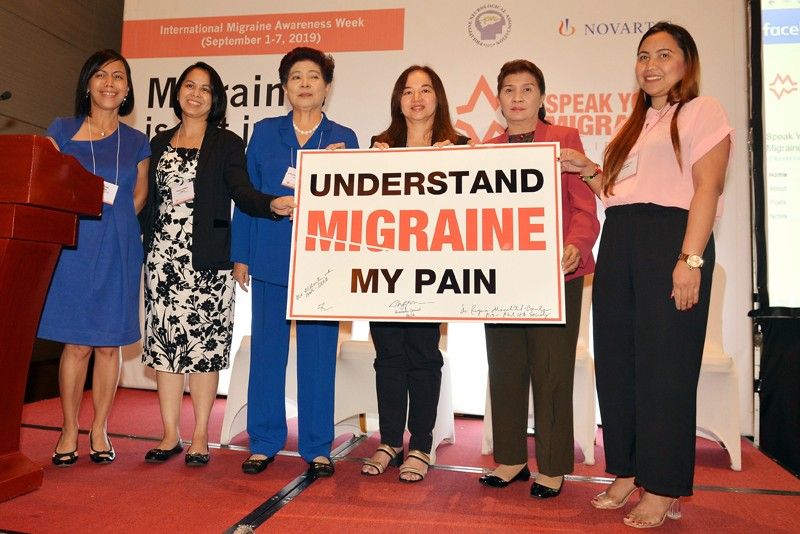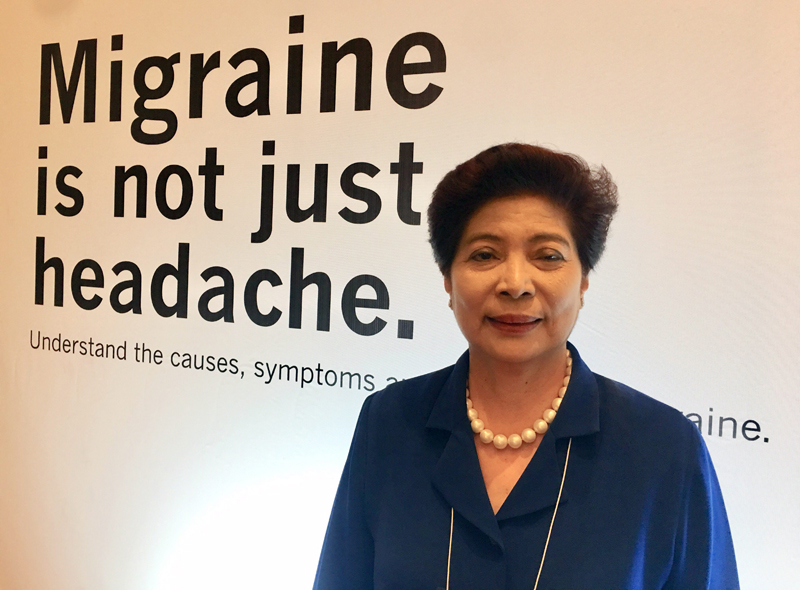The painful truth about migraine


‘Migraine does not destroy lives. It destroys the joy of living.’
When her migraine attacks, all she wants to do is crawl under the covers in a darkened room. But how can this single mom handle the situation when her young, active kids are so excited to take a dip in the pool at noon?
“Bed wins!” shares Christian Joy Fajardo, a migraine sufferer for years now. “I would lie on the bed the whole day until the throbbing pain around my head builds up to an excruciating level, before it finally passes.”
According to Joy, sometimes her kids would call her “monster mom.”
“When I’m having a migraine attack, I become hot tempered. I get easily irritated by the noise they make even if they’re just playing or having fun,” Joy added.
When she rejoins them after the attack, Joy feels their disappointment. She’s gutted, too. Once again, she’ll be incapacitated in bed, instead of making memories with her children.
“I really want to play with them, to be more present for them. How many regrets will I have in the future if I don’t address this debilitating disease?”
Joy just couldn’t figure out a way to parent her kids through the pain.
Migraine is not just a simple headache
Joy is just one of the 12 million Filipinos who suffer from migraine, a chronic and debilitating disease that negatively impacts the quality of life and work productivity of migraine sufferers. Yet, awareness on and understanding of migraine is very low. There are many misconceptions about migraine and one of the most common is that migraine is just a simple headache.
“Contrary to popular belief, migraine is not just a simple headache,” explains Dr. Regina Macalintal-Canlas, president of the Philippine Headache Society. “Migraine is a type of headache disorder that involves current attacks of moderate to severe head pain that is typically throwing, often on the side of the head and associated with nausea, vomiting and sensitivity to light, sound and odors. It can make you unproductive for days.”
Migraine sufferers know that an all-too-familiar migraine is on its way. One or two days before the attack, they’ll experience poor concentration, they crave for sweets, they become irritable and hot tempered. The next day, they’ll see bright lights, jagged shapes and feel flushed, sweaty and anxious.
“If you start experiencing one of the symptoms, take an analgesic right away so that when the headache starts the pain would still be bearable,” advises Dr. Canlas.
“When I’m in the middle of an attack and the pain was too much, I would throw up,” shares Joy. “Sometimes, I just want to jump out of the window to end the pain. I also get anxiety attacks.”

Philippine Headache Society president Dr. Regina Macalintal-Canlas
So yes, migraine sufferers aren’t just acting up when they complain of immense pain when they get the attacks.
“I could vouch for this because I’m a migraine sufferer since I was a kid,” Dr. Canlas, the feisty headache warrior, admits. “I even missed my graduation at UP Manila because of migraine.”
While there are medications available in the market, Dr. Canlas advises migraine sufferers to change their lifestyle and avoid certain food items that could trigger an attack.
“These include wine, chocolates (because they have phenyletlamine), cheddar cheese, blue cheese, nuts (teramine), MSG-rich food like soy sauce and Chinese food, and highly processed meat items like hotdog, tocino, bacon salami and sausages,” shares Dr. Canlas.
So who are prone to migraine?
According to Dr. Canlas, migraine is hereditary.
“If your parents are migraine sufferers, there’s a 75-percent chance you’ll acquire the disease,” she explains.
Although the prevalence of migraine occurs at the age of 25 to 45 years old — the productive years — children as young as seven suffer from migraine as well.
“That’s what we refer to as Childhood Migraine,” adds Dr. Martha Lu-Bolanos, head of the Headache Council of the Philippine Neurological Association (PNA). “Aside from the genes, kids suffer from migraine because of too much exposure to gadgets.”
Migraine in the workplace
Migraine is among the top 10 most disabling disorders worldwide and is particularly burdensome among the young and middle-aged women. It has a substantial negative impact on worker productivity.
In the UK alone, some 25 million working or school days are lost every year because of migraine. Ninety-percent of people report that they can’t work or function whenever they have migraine attacks.
In observance of International Migraine Awareness Week, which is slated from Sept. 1 to 7, Novartis Healthcare Philippines, Dr. Regina Canlas, Dr. Martha Bolanos and Dr. Imelda Santos, chief labor employment officer of the Bureau of Working Conditions of the Department of Labor and Employment (DOLE), banded together to increase awareness and understanding of migraine and addressing its impact on Filipino workers’ productivity.
“Unfortunately, migraine is widely misunderstood and misconceptions abound. People living with migraine may experience a lack of empathy from employers and colleagues when frequent migraine attacks prevent them from delivering optimal work outputs,” Dr. Canlas says. “We hope that proper management of migraine can help enhance work productivity, which will in the long term be beneficial to our country’s economic growth.”
In line with the Universal Health Care Law, the PNA is answering the challenge by devising an infrastructure where a data registry will be in place for headaches most especially for migraine and tension headaches.
“Efforts are also in place to develop and adapt Clinical Pathway Guidelines for the management of migraine and headaches to serve as backbone for health technology assessment and possible PhilHealth benefit package,” says PNA VP Dr. Rosalina Espiritu-Picar. “We would like to ensure the public that the PNA will respond to this challenge to the best of our abilities and resources.”
Dr. Martha Bolanos, on the other hand, called on Filipinos experiencing migraine signs and symptoms to consult a headache specialist for proper diagnosis and management.
“Medications are available that can stop migraine symptoms and prevent future attacks,” she adds.
The PNA, PHS and Novartis Healthcare Philippines called on employers to work with healthcare professionals in providing effective treatment that can reduce the impact of migraine on worker productivity.
The three stakeholders said that employers could implement effective disease management programs that include patient education on lifestyle changes to prevent migraine attacks and ease symptoms and appropriate treatments for early treatment of migraine.
“Migraine impacts on workers’s productivity. Employers, through their Health and Safety Committees, can include their Occupational Health Program, activities like information dissemination in addressing migraine,” adds Dr. Imelda Santos of DOLE.
Throughout the International Migraine Awareness Week, Novartis, in collaboration with the PNA and PHS, will hold awareness forums in Baguio General Hospital, Jose B. Lingad Regional Hospital in San Fernando, Pampanga; Philippine General Hospital, Adventist Medical Center Manila, De La Salle Medical Center in Dasmarinas, Cavite, and Davao Medical School Foundation and Novartis office in Makati.
“Migraine does not destroy lives. It destroys the joy of living,” adds Dr. Canlas.
* * *
To learn more about migraine, visit the Speak Your Migraine Facebook page at www.facebook.com/speakyourmigraine.



















